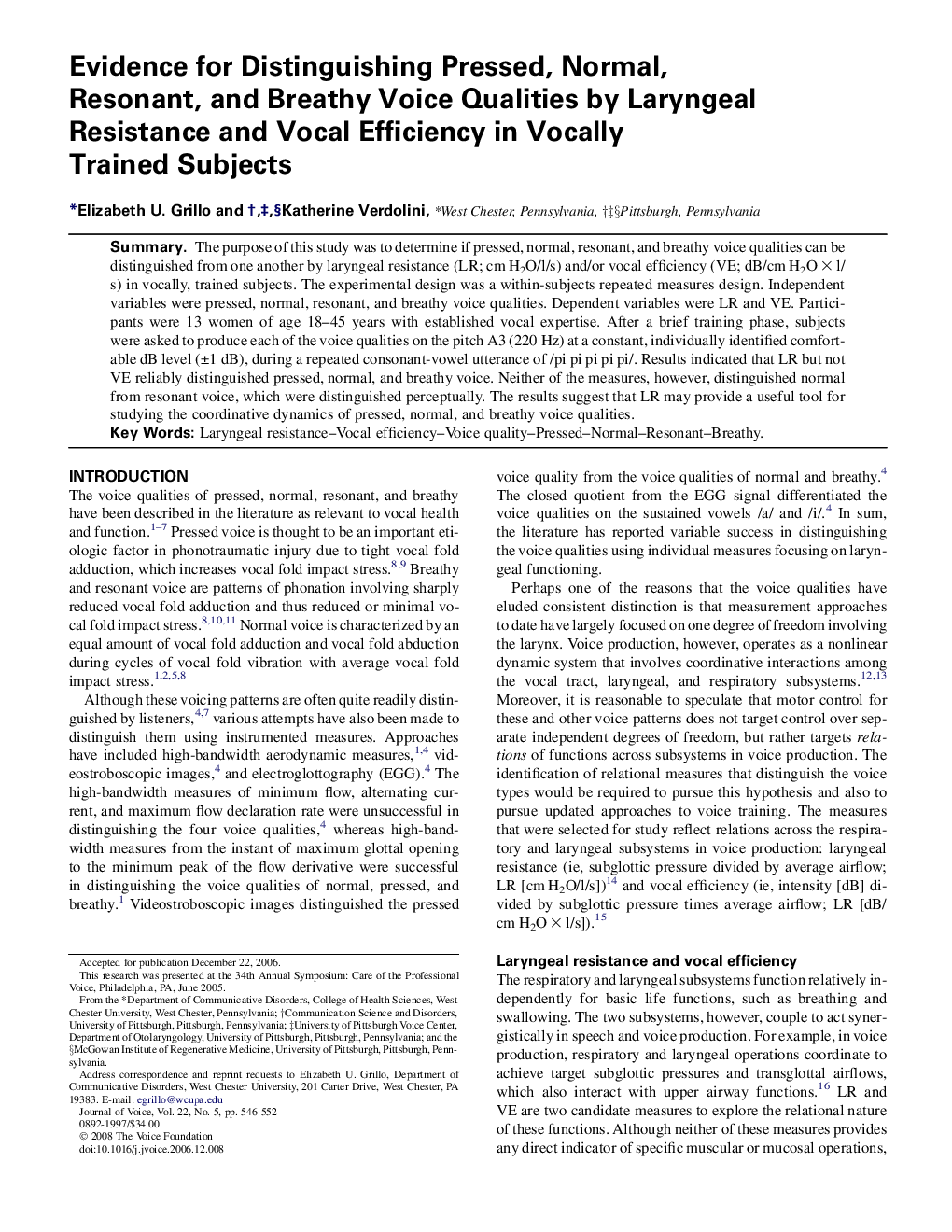| Article ID | Journal | Published Year | Pages | File Type |
|---|---|---|---|---|
| 1102676 | Journal of Voice | 2008 | 7 Pages |
SummaryThe purpose of this study was to determine if pressed, normal, resonant, and breathy voice qualities can be distinguished from one another by laryngeal resistance (LR; cm H2O/l/s) and/or vocal efficiency (VE; dB/cm H2O × l/s) in vocally, trained subjects. The experimental design was a within-subjects repeated measures design. Independent variables were pressed, normal, resonant, and breathy voice qualities. Dependent variables were LR and VE. Participants were 13 women of age 18–45 years with established vocal expertise. After a brief training phase, subjects were asked to produce each of the voice qualities on the pitch A3 (220 Hz) at a constant, individually identified comfortable dB level (±1 dB), during a repeated consonant-vowel utterance of /pi pi pi pi pi/. Results indicated that LR but not VE reliably distinguished pressed, normal, and breathy voice. Neither of the measures, however, distinguished normal from resonant voice, which were distinguished perceptually. The results suggest that LR may provide a useful tool for studying the coordinative dynamics of pressed, normal, and breathy voice qualities.
